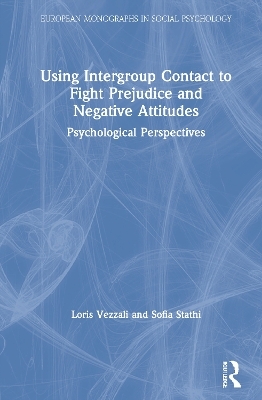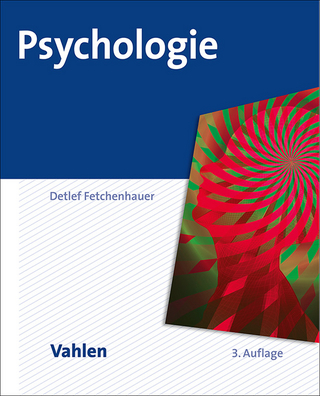
Using Intergroup Contact to Fight Prejudice and Negative Attitudes
Routledge (Verlag)
978-0-8153-5346-1 (ISBN)
The contact hypothesis (Allport, 1954) posits that in an environment of equality, cooperation, and normative support, contact between members of distinct groups can reduce prejudice. Whilst considerable research supports this hypothesis, how theory can be tested in the field remains relatively unexplored. In this innovative book, Vezzali and Stathi discuss why relying solely on advancing theory without considering applied aspects integral to contact may limit the scope of contact theory and restrict our understanding of complex social phenomena. Exploring fascinating topics such as the role of contact in reducing implicit prejudice and fostering collective action, applying indirect contact, and promoting positive interactions among survivors of natural disasters, Vezzali and Stathi explain how contact theory can be implemented and enhance the societal impact of intergroup contact research.
Featuring extensive discussion on intergroup contact literature, future directions, and the necessity of applied research, this book will be essential reading for both students and academics of social and behavioral psychology.
Loris Vezzali is Full Professor at the Faculty of Medicine of the University of Modena and Reggio Emilia, Italy. Sofia Stathi is Associate Professor of Social Psychology and Director of the Centre for Inequalities at the University of Greenwich, UK.
Preface
1. Maximizing the effects of intergroup contact: Structuring the contact setting
2. Extended intergroup contact: the need to identify practical strategies in order to produce new theory
3. Vicarious intergroup contact and media vicarious contact: Theoretical, methodological and practical distinctions
4. Imagined intergroup contact and its real potential: Applying interventions in the field
5. Fighting indirect forms of prejudice: The role of direct and indirect contact in reducing implicit prejudice and fostering outgroup humanity attribution
6. The secondary transfer effect: Two routes for tackling contextual and generalized prejudice
7. Creating a bridge between intergroup contact and collective action research: A model on how contact can foster collective action among high- and low-status groups
8. Promoting positive intergroup relations among survivors of natural disasters
Conclusion
References
| Erscheinungsdatum | 16.11.2020 |
|---|---|
| Reihe/Serie | European Monographs in Social Psychology |
| Zusatzinfo | 15 Line drawings, black and white; 3 Halftones, black and white; 18 Illustrations, black and white |
| Verlagsort | New York |
| Sprache | englisch |
| Maße | 156 x 234 mm |
| Gewicht | 453 g |
| Themenwelt | Geisteswissenschaften ► Psychologie ► Allgemeine Psychologie |
| Geisteswissenschaften ► Psychologie ► Psychoanalyse / Tiefenpsychologie | |
| Geisteswissenschaften ► Psychologie ► Sozialpsychologie | |
| Mathematik / Informatik ► Mathematik | |
| ISBN-10 | 0-8153-5346-4 / 0815353464 |
| ISBN-13 | 978-0-8153-5346-1 / 9780815353461 |
| Zustand | Neuware |
| Informationen gemäß Produktsicherheitsverordnung (GPSR) | |
| Haben Sie eine Frage zum Produkt? |
aus dem Bereich


